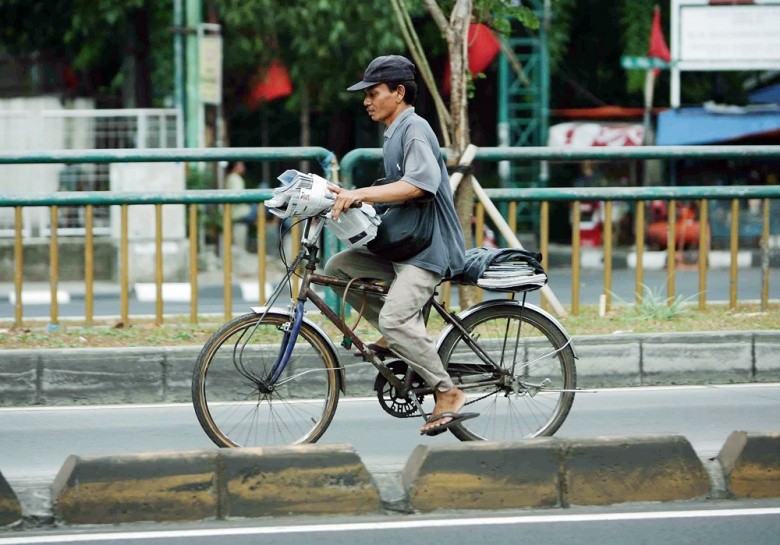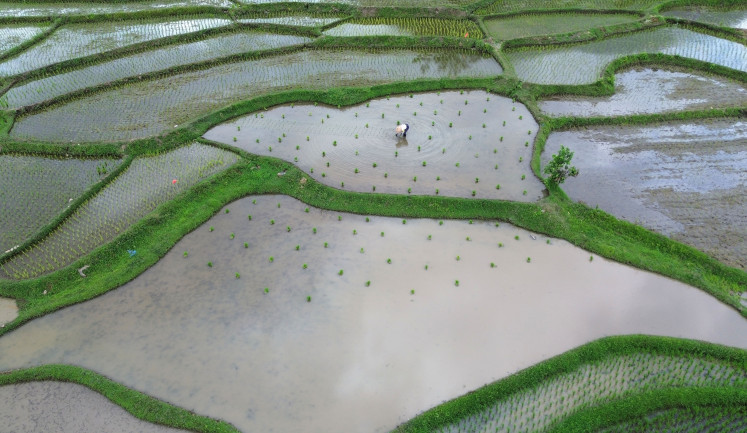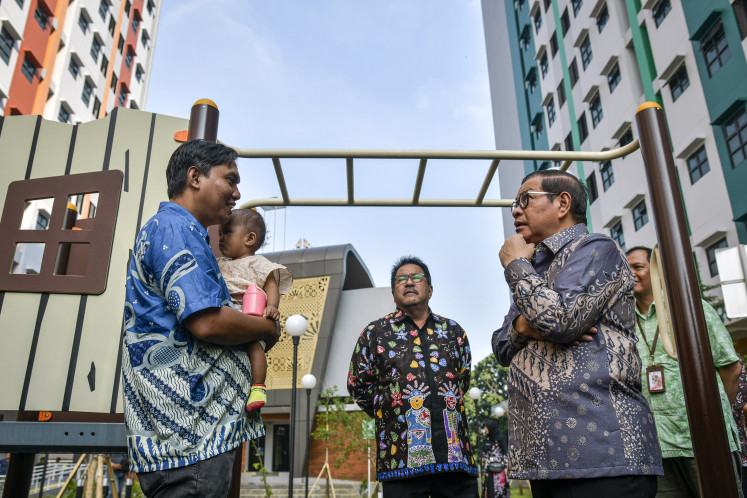Popular Reads
Top Results
Can't find what you're looking for?
View all search resultsPopular Reads
Top Results
Can't find what you're looking for?
View all search resultsLessons from the last national afternoon newspaper
The famous tagline of SP, “Peristiwa pagi tersaji sore” (Morning events served in the afternoon) is now only memory.
Change text size
Gift Premium Articles
to Anyone
I
was quite shocked when a senior fellow journalist, Eko Budi Harsono, recently wrote a status on his Facebook account that read “Bye bye koran sore” (Bye afternoon newspaper). He posted the announcement that starting Jan. 13, Suara Pembaruan (SP) — the nation’s only afternoon newspaper — would come to its readers as a morning newspaper.
Comments on the post recalled some sweet and bitter memories of working as a journalist for SP. Others expressed concerns about the continuing decline of newspapers in Indonesia. Evidently it is the end of the afternoon newspaper.
The glory of afternoon newspapers, with their morning scoops before the internet era, ended when cash-strapped Sinar Harapan (SH) ceased its print publication on Jan. 1, 2016, followed by Terbit, which closed on March 2, 2016. Both papers now are online only. On Jan. 10, 2011, Semarang-based Wawasan became a morning newspaper, a brave move to survive amid tight competition. The famous tagline of SP, “Peristiwa pagi tersaji sore” (Morning events served in the afternoon) is now only memory.
Personal memories have returned on the challenges of being an afternoon newspaper journalist. A very tight deadline forced me to start work as early as possible to be able to reach sources and write, similar to today’s morning shifts (if any) at newswires and online news portals. Each time I arrived at the office in Cawang, East Jakarta, at around 6 a.m., I always saw the grey metallic Volvo of my then-editor-in-chief Bondan Winarno (who passed away on Nov. 29, 2017), already parked in front of the lobby. The brisk daily meeting starting around 7 a.m. decided the main stories, their angles and those in charge of the respective reportage.
From my colleagues at SP, borne out of the historic SH, I learned the vital importance of networking. Stories needed to be rushed to copy desks by 11 a.m. at the latest. So we tried to call or e-mail our sources early morning. Of course, few sources were readily available — even only for phone interviews — unless they felt quite acquainted with the journalists. I witnessed how the qualities of senior journalists such as honesty, passion and fairness, made it easy for them to get acquainted with news sources, who made themselves available even in uncomfortable situations.
Another key lesson was that journalists should be able to generate stories that do not rely on current events. Amid tighter media competition, it is important to write more than just the facts, although these remain the backbone of our work. We have to engage our readers, which means telling a story. As journalists across the world have long reminded us, the best journalism is always about people, so journalists must be able to humanize stories to effectively bring us to the center of a problem. For many readers, human interest stories are much more compelling. “And this will make your stories evergreen,” Pak Bondan often said.
Of course, we still needed to write one or two breaking news stories for our front page, but Pak Bondan’s “evergreen” journalism style enabled us to work more efficiently and stopped us from always rushing to meet deadlines. Under this journalism concept, it became clear to me that media outlets and journalists should provide a public space for meaningful conversation. And it is the responsibility of journalists to provide reliable and accurate facts in a meaningful context. This must have been the rigor at SH, SP’s predecessor established on April 27, 1961.
Continuing the struggle to keep SH alive from squabbling bosses and economic hardships, Aristides Katoppo was among SH’s last chief editors, who had long stood up against authoritarian leaders Sukarno and Soeharto, and often against media owners too. According to Pak Tides, who passed away last year, journalists must be able to use their instinct and consciousness in their tasks. Journalists must have pluck as they mostly deal with difficult situations. Many fellow journalists remember Tides as a courageous man who always inspired young journalists to keep spreading hope amid uncertainty.
A former chief editor of SH, Sabam Siagian, the late former Australian ambassador, relentlessly pushed journalists to understand diplomacy. Pak Sabam was always keen to facilitate Indonesian journalists to talk to foreign envoys because he wanted journalists to help advocate the national interest in international fora through journalism. His legacy continues in The Jakarta Post, where he was its first chief editor.
Among the political penalties against SH was its closure on Oct. 9, 1986, over its political criticism of the New Order. In 1987, the government issued a publishing permit for the paper, which had to be issued under a new name, Suara Pembaruan. It later held shares in the Post, which was cofounded by media publishers Kompas, Tempo, Suara Karya and Sinar Harapan.
It is unfortunate to see that when online is first but inaccurate, many news portals lose their credibility, prompting people to turn to mainstream media. This shows a desperate need for excellence in storytelling — on the truth.
I ended my eight-year journey with SP in 2010 when with dozens of colleagues we had to sign layoff letters, following the company’s ownership shift to Lippo Group. Some protested. Others saw a blessing in disguise as they simply saw the end was near for afternoon newspapers.
I feel a hole inside each time I pass by the newspaper’s former main office on Jl. Dewi Sartika. Now it is an abandoned compound surrounded by high growing grass where newspaper agents used to flock in its front yard at noon while workers of the paper’s printing house, Sinar Agape Press, started to roll the printing machines. The legacy of Suara Pembaruan will remain in my heart.
_________
Journalist at The Jakarta Post, formerly with Suara Pembaruan from 2002 to 2010










